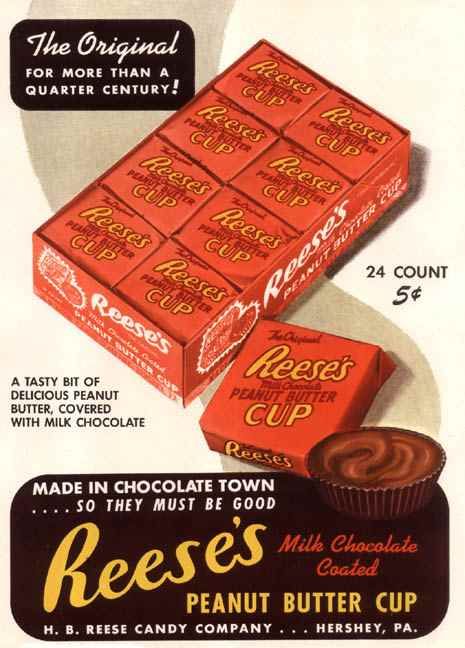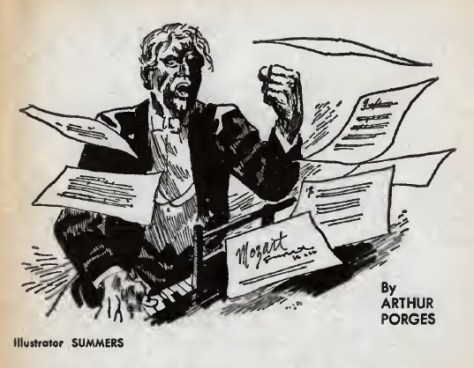[if you’re new to the Journey, read this to see what we’re all about!]

by Gideon Marcus
In the last planetary article, I discussed the discovery and nature of the seventh planet, Uranus. It was the first sizable member of the solar system to be found since ancient times. And yet, its very discovery sowed the seeds for the quick locating of the next planet out from the sun.
Shortly after William Herschel spotted Uranus and deduced what it was, other astronomers realized that the green planet wasn't following a regular path around the sun. Some invisible thing was tugging at it, causing it to deviate from its orbit. Doing a little math, it was determined that this object must be a large planet, 30 times farther from the sun than the Earth, half again as far from the sun as Uranus!
After a comparatively short search to find Planet 8, a Frenchman named Le Verrier discovered it in 1846, in a very neat application of orbital mathematics and organized observation, the likes of which may never again be repeated. The English wanted to name the planet "Oceanus," but since the French found it, they chose the name: Neptune – Roman God of the sea and brother to Jupiter.

A wobble in Uranus' orbit led to the discovery of Neptune. And, in fact, Neptune itself has a little wobble that led people, around the turn of the century, to believe one or two planets lay beyond the eighth planet. Those planets were sought for and one little world was ultimately found in 1930 as a result, but whether Pluto is actually the cause of the wobble remains an open question. An exciting 1957 article suggests that Pluto was once a moon of Neptune, ejected early in the planet's life, which could explain the smaller world's eccentric orbit.
So what is Neptune like? In some ways, Uranus and Neptune are of a piece, both midway in size between the terrestrial worlds and the true giants, Jupiter and Saturn. Uranus shows up as a small pale green disk in a telescope; Neptune is a blue circle half that size. Neptune is a little more massive than Uranus, but also a little smaller. Where Uranus has five moons. Neptune appears to have just two. Backwards-rotating Triton has been known almost since Neptune's finding, but little Nereid was just discovered in 1949. Thanks to these moons, we know that Neptune has 17.26 masses of the Earth (compared to a little over 14 for Uranus). Moons also tell us that Uranus is tipped over on its side; Neptune's axial tilt is 27%, very similar to the 23.5% of Earth's.
The four terrestrial or rocky worlds are composed mostly of dense matter like metals and silicates, and the gas giants are made mostly of hydrogen and helium (like the sun). Uranus and Neptune seem to be halfway planets, around 20% heavy stuff and 80% middling stuff, like methane, ammonia, and water – all of which, at the frigid temperatures of the outer solar system, should be in liquid or solid form.
There is likely gaseous hydrogen and helium making up a tiny fraction of the planet's mass. Observations in 1950 suggested Neptune has twice the density of Uranus, which would mean the atmosphere of hydrogen and helium would be thin, indeed, over a slush of methane, ice, and pressure-metallized ammonia, which in turn covers a solid core of something, about twice the mass of the Earth.

How do we know what's in Neptune's atmosphere? A spectrograph takes visible light and separates into its components, like a prism. Every element has a distinctive pattern when it is run through a spectrograph. Scientists try to recreate the patterns that they see in a controlled environment. For instance, the patterns seen in Neptune's diffracted light are most closely approximated by a mix of three parts helium to one part hydrogen at a temperature no greater than 78 degrees Kelvin (-351 degrees Fahrenheit). Spectral "fingerprints" associated with methane have also been found. This, then must be the general nature of Neptune's visible layer of air.
The spectroscope also tells us, based on the shifting wavelengths of light from the planet's edges (the Doppler Effect), that Neptune's day is 15.8 hours long. That rapid spin bulges the planet like an egg, though to nowhere near the extent of, say, less-dense Saturn.
And… that's it! This is the entire sum of knowledge we have about the huge frigid sentinel near the edge of our solar system. The blue orb is too far away for any surface features to be discerned, and no radio output has been detected. Until we send a probe past Neptune, I'm afraid we will learn precious little more about the eighth planet.
Then again, at the rate our Space Race is going, Mariner 19 could be in the offing as early as the next decade…









![[November 6, 1962] The road not taken… (Philip K. Dick's <i>The Man in the High Castle</i>)](https://i0.wp.com/galacticjourney.org/wordpress/wp-content/uploads/2017/11/book2.jpg?resize=672%2C372)



















































